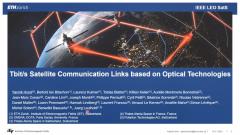
This video program is a part of the Premium packages:
Doherty Power Amplifier Design for 5G Cellular Infrastructure
- IEEE MemberUS $1.00
- Society MemberUS $0.00
- IEEE Student MemberUS $1.00
- Non-IEEE MemberUS $2.00
- IEEE MemberUS $50.00
- Society MemberUS $0.00
- IEEE Student MemberUS $25.00
- Non-IEEE MemberUS $100.00
Doherty Power Amplifier Design for 5G Cellular Infrastructure
The 5G wireless revolution presents some dramatic challenges to the design of cellular infrastructure, as 5G targets higher data rates with multiple-input multiple-output (MIMO) antennas, ultra-low latency, new waveform, etc. The type of waveform used in the radio access network is a defining characteristic of any mobile generation. During the development phase of 5G NR, orthogonal-frequency-division-multiplexing (OFDM) and its variants are the main candidates for the waveform. Unfortunately, these waveforms exhibit a very high peak-to-average power ratio (PAPR). This high PAPR increases the 5G base station cost by increasing wasted power and its cooling requirement. To accommodate this challenge 5G RF transmitter demands higher-power efficiency and stringent linearity from its power amplifier (PA). To fulfill these requirements Doherty amplifier is the most suited solution due to its simple structure and high efficiency at back-off power. However, its design process varies tremendously across the use case, frequency range, power range, and device technology. Due to this, the design procedure of a Doherty PA is often subjected to tuning and optimization. In this tutorial, I will cover the entire lifecycle of an efficient power amplifier design.
Doherty Power Amplifier Design for 5G Cellular Infrastructure
Dushayant Kumar Sharma (Wipro Limited, India)
 Cart
Cart Create Account
Create Account Sign In
Sign In





